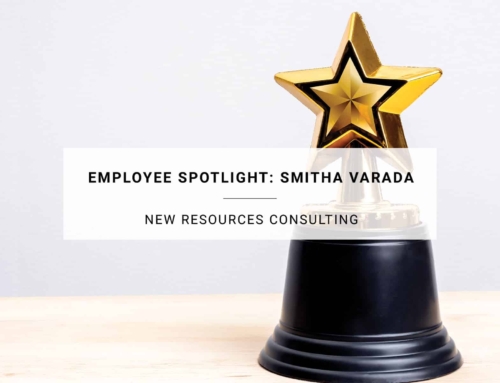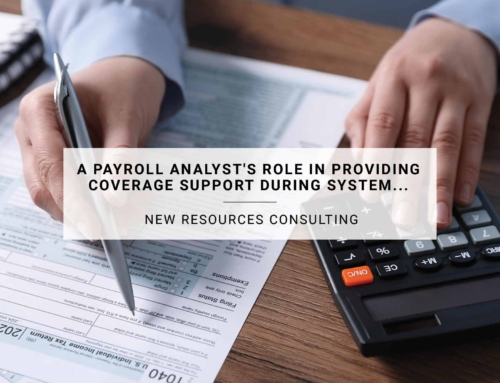
2026 Planning Guide for IT Leaders: Strategic Moves That Will Define Success
Insights from NRC’s Technology and Delivery Experts
Executives are entering the 2026 planning cycle under more pressure than ever: deliver measurable transformation, harness AI responsibly, and do so while managing operational efficiency and risk. The pace of technological change isn’t slowing—and neither are stakeholders’ expectations.
To help leaders focus their strategies, experts across New Resources Consulting (NRC) have identified the most critical shifts shaping the future of enterprise IT. From ERP modernization and data-driven service models to AI maturity and strategic alignment, these insights spotlight where organizations must invest to drive value in 2026 and beyond.
Oracle Roadmaps Accelerating Digital Modernization
Mike Doyle — VP, Enterprise Technologies
2026 brings significant innovation across the Oracle ecosystem—benefiting both Oracle Cloud ERP/HCM customers and those still running PeopleSoft.
For PeopleSoft organizations, the upcoming PeopleTools 8.62 release represents a meaningful shift. A unified landing page replaces the traditional collection of homepages, giving users faster access to personalized insights through live data tiles, alerts, and action triggers. A new Smart Prompt capability elevates productivity by prioritizing frequently used data values, and enhanced Customization Insights will help teams reduce patch effort and speed project delivery.
On the Cloud side, Oracle continues to embed advanced AI agents across its SaaS modules—transforming repetitive operational tasks into intelligent workflows. And with Oracle’s recent partnership with Google, customers will soon be able to tap directly into Gemini models within OCI for accelerated innovation.
Navigating these upgrades and capabilities requires alignment with business goals to ensure new features drive measurable value. NRC helps clients assess readiness, prioritize high-impact improvements, and accelerate modernization while minimizing disruption.
Managed Services Become Value Creators — Not Maintenance Crews
Sergiy Vlasik — Application Architect, Software Development
Traditional managed services focused on uptime, tickets, and tactical support. As data becomes the core of competitive advantage—particularly with AI adoption—expectations are rapidly evolving.
Organizations now need managed service providers who:
- Influence data architecture decisions
- Optimize performance, cost, and scalability
- Enable analytics that uncover new insights
- Co-innovate solutions that speed time-to-value
This strategic enablement model requires a deeper understanding of industry priorities and closer integration with internal teams. Leaders planning for 2026 should evaluate partners not only on SLAs, but on whether they drive innovation and continuous improvement.
Roadmaps Must Be Dynamic, Measurable, & Cyber-Resilient
Tara Simonson — Director, Client Delivery
In 2026, project success will be defined by business outcomes—not outputs.
Roadmaps must be built with:
- KPIs tied directly to enterprise strategy
- Agile checkpoints to respond to rapid shifts
- Cybersecurity and cyber resiliency woven in from the start
- AI-related enablement (training, governance, process redesign)
Organizations that continuously reassess priorities and make informed adjustments will maintain momentum—and avoid costly misalignment late in the game. With the proper structure in place, roadmaps become living tools that guide decision-making and accelerate results.
AI Success Depends on Enterprise Patterns — Not One-Off Pilots
Brent Blawat — Enterprise AI Strategist
Over the last two years, organizations ran countless AI pilots—chatbots here, document processing there—each with its own models, tools, and workflows. While useful for experimentation, this fragmented approach has made scale difficult and governance nearly impossible.
In 2026, the differentiator is reusable AI architecture.
Leaders must shift to:
- Repeatable AI patterns for retrieval, summarization, classification, and validation
- Pattern libraries that standardize best practices
- Clear governance models for transparency and safety
- Composable systems that accelerate deployment across the enterprise
Success will no longer be measured by how many AI pilots you launch—but how many you can repeat, scale, and evolve.
Strategic IT Alignment Will Define Enterprise Competitiveness
Chris Downs — VP, Client Delivery
The strongest organizations in 2026 will treat IT as a strategic growth engine—not a cost center.
That requires:
- Strategy-first planning, where every technology initiative advances core business goals
- AI- and data-powered visibility into which investments deliver the most significant returns
- Governance frameworks that adapt quarterly—or faster—as priorities shift
- Shared accountability across CIOs, CFOs, and business executives
This alignment transforms technology from “supporting the business” into accelerating it—fueling competitive differentiation and long-term resilience.
Building for What’s Next: Preparing Teams for AI-Enabled Development
Chris Pluta – Technology Solutions Group Delivery Lead
Throughout 2025, many organizations saw firsthand how thoughtfully integrating AI into software workflows can unlock real value: streamlining development, improving data validation, and boosting team confidence. Within NRC’s Technology Solutions Group, the focus has been on creating human-guided, responsible applications that make the most of AI-powered tools like GitHub Copilot and MCP servers — enhancing productivity while keeping people at the center of the process.
As we move into 2026, the emphasis shifts from experimentation to readiness and utilization. Too often, development teams still rely on undocumented knowledge or manual workflows that slow innovation and limit scalability. NRC helps bridge that gap by strengthening documentation, modernizing applications, and upskilling developers to make AI-assisted tools a seamless part of the software development lifecycle.
The goal for 2026 is clear: build resilient systems, confident teams, and a clear path toward sustainable AI-enabled growth.
Where to Go from Here
2026 will reward organizations that make intentional, business-first decisions about their technology investments. That means more than adopting the newest tools—it requires aligning modernization efforts, data strategy, AI patterns, and delivery frameworks to measurable outcomes. The leaders who win will be those who combine innovation with discipline, advancing productivity, strengthening resilience, and creating better employee and customer experiences along the way.
If you’re beginning to map out your 2026 initiatives, now is the right time to evaluate which priorities will deliver the greatest value—and how to execute them without disruption. NRC partners with executives to turn high-level strategy into practical roadmaps supported by proven delivery expertise, strong governance, and a commitment to outcomes that matter.
Let’s explore what 2026 could look like for your organization. Schedule a no-pressure strategy conversation with our team to discuss your goals, challenges, and the best path forward—whether you’re considering modernization, expanding AI capabilities, or improving alignment between business and IT.
Table of Contents
- Oracle Roadmaps Accelerating Digital Modernization
- Managed Services Become Value Creators — Not Maintenance Crews
- Roadmaps Must Be Dynamic, Measurable, & Cyber-Resilient
- AI Success Depends on Enterprise Patterns — Not One-Off Pilots
- Strategic IT Alignment Will Define Enterprise Competitiveness
- Building for What’s Next: Preparing Teams for AI-Enabled Development
- Where to Go from Here
Related Posts




